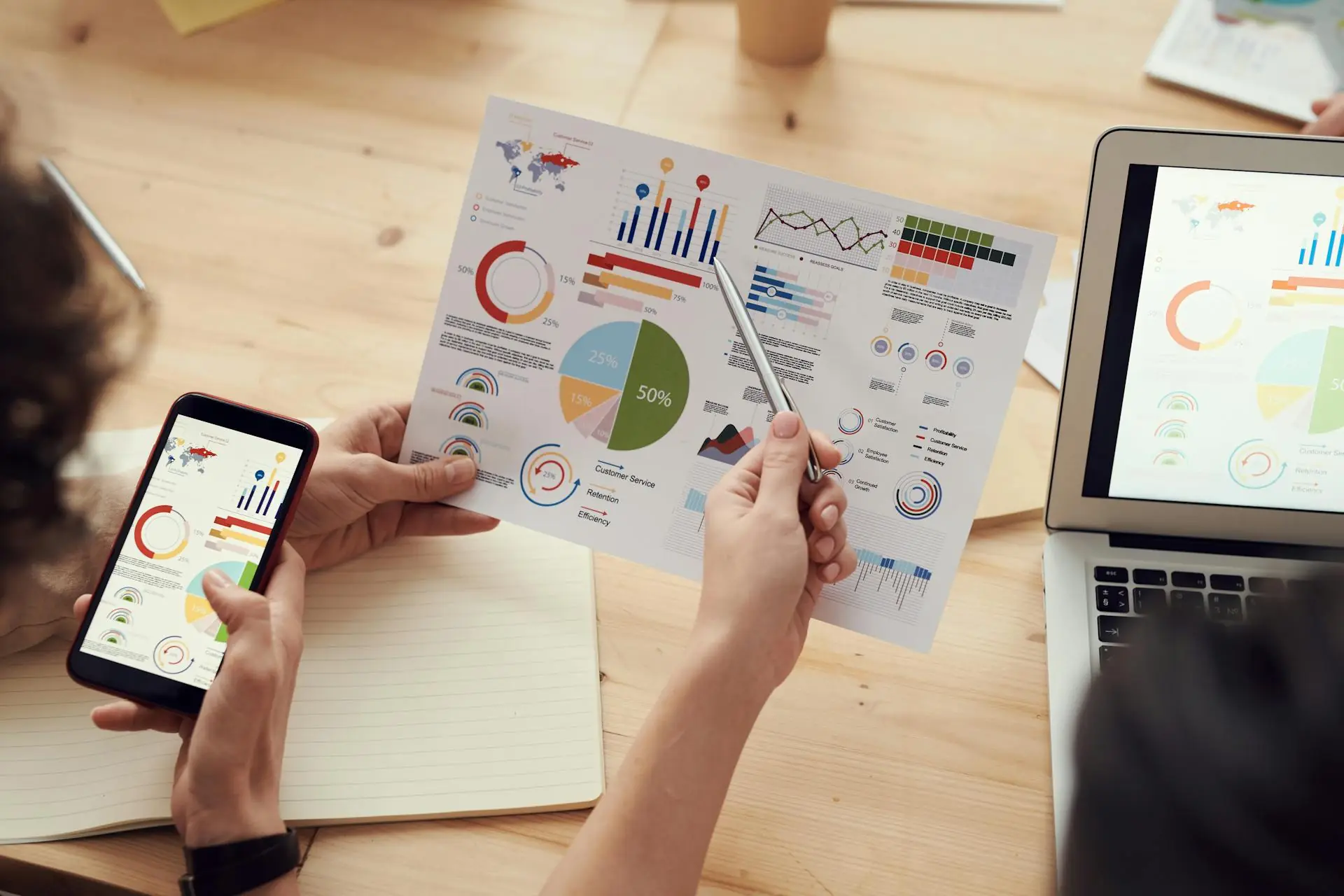26 Time Tracking Best Practices to Boost Your Productivity
Keeping track of time is a helpful habit that can make us more productive, efficient, and successful in different situations. But it’s important to know that each situation requires its own special way of doing things.
In this article, I’m happy to share with you 26 of the best time management practices I’ve gathered over the years. These insights come straight from my own experiences, and they’re designed to work wonders in various contexts. So, let’s dive in and discover some fantastic strategies together!
How Can I Make the Most of My Personal Time?
Time is something we can’t get more of, so it’s important to use it wisely. How we spend our time affects how successful and happy we are. But sometimes, it’s difficult to manage our time well, and we end up feeling stressed and overwhelmed.
That’s where a personal time tracking app can help. It’s a way to keep track of how we spend our time throughout the day. By doing this, we can see where our time goes and find ways to make better use of it.
Personal time tracking helps us:
- See what things distract us and waste our time, so we can avoid them.
- Set goals that are realistic and important to us.
- Plan our time better and avoid leaving things to the last minute.
- Focus on one thing at a time, which can make us more productive.
- Look back at how we spent our time and make changes if we need to.
By embracing personal time tracking as a tool, we unlock the potential to revolutionize our time management skills and achieve greater success in attaining our goals.

Image by pikisuperstar on Freepik
Best Ways to Get Started Tracking Your Time
If you want to start keeping track of your time, here are some good practices for each step:
Tip 1: Set clear goals and priorities
Avoid the common mistake of not setting clear and realistic goals for yourself. Without goals it is easy to lose track and focus. Use the SMART criteria to make goals that are specific, measurable, achievable, relevant, and time-bound.
Tip 2: Plan and schedule your time
Use an online calendar or a time clock app to write down your tasks and allocate your time. Plan your day or week in advance, preferably the night before or in the morning, so you start with a clear plan and avoid feeling overwhelmed.
Tip 3: Minimize distractions and stay focused
Turn off notifications, close unnecessary tabs, or put your phone away. Find a quiet place to work, or use headphones to block out noise. Set boundaries with others and let them know when you’re available. You can also try the Pomodoro technique, where you work for 25 minutes and take a 5-minute break.
Tip 4: Utilize time blocking techniques
Divide your day into chunks of time for different tasks. For example, set aside 2 hours for writing, 1 hour for meetings, and 30 minutes for email. You can use colors or symbols to mark different blocks.
Leave some extra time between blocks for transitions or unexpected events. It’s also good to have some free time for relaxation or creativity.
Learn more about improving your productivity with Time Blocking.
Tip 5: Regularly review and reflect on your time usage
Take a look at your time data and analyze how you’ve spent your precious hours. Employ a useful tool or application that generates reports and charts based on your entries.
Jot down your reflections and emotions in a journal or notebook. Pose questions to yourself, such as: Have you achieved your goals? Did you adhere to your plan? Was any time squandered?
Assess what aspects worked well and what didn’t. Leverage these valuable insights to fine-tune your goals, priorities, plans, and habits as necessary.
Tip 6: Effectively manage time through time clock software
Using timesheet software can be a valuable tool to help you manage your time effectively. With a good app, you can monitor and analyze how you spend your time on various tasks and projects.
By doing so, you can identify areas where you can improve your skills and performance. A time tracking app also allows you to set goals and challenges for yourself, enabling you to track your progress and achievements.
Moreover, it helps you maintain a healthy work-life balance by limiting your work hours and scheduling free time for relaxation. Additionally, time clock software facilitates communication with your clients and stakeholders by providing them with time-related updates and reports.
Tip 7: Leverage time tracking data to motivate yourself and celebrate your achievements
Time tracking can also be a source of motivation and encouragement for yourself. You can use it to set goals and challenges for yourself, such as completing a task faster than before, or increasing your output or quality.
You can also use it to reward yourself for your accomplishments, such as taking a break or treating yourself to something nice after finishing a project or reaching a milestone. Time tracking can help you recognize your progress and achievements, and boost your confidence and satisfaction.
Tip 8: Make the most of your tools
Explore the different features and functions of your time tracking app. Some apps offer project categorization, task tagging, notes, or productivity analysis. Use these features to understand how you spend your time and find ways to improve.
Remember, personal time tracking isn’t about being perfect or strict with your time. It’s about being aware and intentional with your time. By tracking your time, you can make better choices, be more efficient, and find more balance and satisfaction in your life.
“Either Run the Day or the Day Runs You.” – Jim Rohn, American entrepreneur and motivational speaker.
What Are The Optimal Ways for a Project Manager to Time Track?
As a project manager, you are responsible for delivering projects on time, on budget, and on scope. You have to plan, execute, monitor, and control multiple aspects of your projects, such as tasks, resources, risks, quality, and stakeholder expectations.
You also have to deal with uncertainties, changes, and challenges that may arise along the way. That’s why time tracking is an essential skill and tool for project managers.
Time tracking is the process of measuring and recording how much time you and your team spend on different project activities. By tracking your time, you can gain more visibility and control over your projects, improve your efficiency and effectiveness, and achieve better results.
Time tracking for project managers helps you:
- Estimate project duration and costs more accurately and realistically.
- Allocate and manage resources more efficiently and effectively.
- Monitor project progress and performance more closely and objectively.
- Identify and resolve issues and risks more quickly and proactively.
- Communicate time-related updates and reports to stakeholders more clearly and confidently.

Photo by Christina Morillo on Pexels
How to Start Time Tracking for Project Managers
If you want to start time tracking for project management, here are some best practices for each item:
Tip 9: Customize time tracking settings to fit your project’s needs
Explore the customization options in your time tracking app. Tailor the settings to align with your project’s requirements, such as defining project-specific tags, customizing time entry fields, or configuring billing rates. Customization enhances the app’s effectiveness in capturing project-specific details
Tip 10: Set reminders and notifications for time-related tasks
Take advantage of the reminder and notification features in your time tracking app. Set up alerts for upcoming deadlines, important milestones, or time entry submissions. These reminders keep you and your team on track and ensure timely and accurate time tracking.
Tip 11: Train your team to use time tracking software
Choosing a user-friendly time tracking app is a critical time saver for you to introduce new time tracking methods to your team. Later, it will save you time onboarding new team members. Time trackers that come with an extensive knowledge base are an additional time saver.
Tip 12: Track project progress and adjust as needed
Use project management techniques and methodologies that align with your team’s work style. This can include setting up task boards, creating project timelines, and using collaborative tools to streamline communication and task assignment.
By integrating your time clock software with project management workflows, you can effectively monitor and manage project progress, deadlines, and deliverables.
Still looking for a perfect tool? Check out our Top 6 Free Project Management Software.
Tip 13: Collaborate with your team
Utilize collaboration features offered by your time tracking app. This may include features like task assignment, team member status updates, or commenting on time entries. Collaborating within the app fosters transparency, enhances communication, and promotes efficient project coordination.
Tip 14: Communicate time-related updates to stakeholders
Use a communication plan or a stakeholder analysis to determine who needs to know what, when, how, and why about your project. You can also use a communication tool or a platform that allows you to share your time-related updates and reports with your stakeholders in a timely and appropriate manner.
Another practice is to solicit feedback and input from your stakeholders and incorporate them into your project plan as needed. This way, you can keep your stakeholders informed and engaged throughout your project lifecycle.
Tip 15: Evaluate project outcomes and lessons learned with time tracking
A project evaluation or a post-mortem analysis can use time tracking data to assess the results and impacts of your project.
That is, it can identify the strengths and weaknesses of your project management process, such as what used more time than you expected, what used less, and what can be improved. This way, you can learn from your experience and apply your lessons learned to future projects.
Time tracking for project managers is not about micromanaging or controlling every minute of your project. It’s about being more aware and intentional with your time.

Photo by fauxels on Pexels
What Are the Best Practices for Administering Time Tracking by Human Resources?
As an HR professional, you are responsible for managing your employees’ time and attendance. You have to ensure that your employees are working efficiently and effectively, that they are paid accurately and fairly, and that they comply with the labor laws and regulations.
You also have to deal with various challenges and issues that may arise from time tracking, such as errors, disputes, fraud, or abuse. That’s why administration of time tracking by HR is a critical skill and function for HR professionals.
Administration of time tracking by HR is the process of overseeing and controlling how your employees track their time and attendance. By administering time tracking by HR, you can improve your employees’ productivity and performance, reduce your labor costs and risks, and enhance your employee engagement and satisfaction.
Using time tracking software benefits human resources by helping you:
- Monitor and measure your employees’ work hours, overtime, breaks, leaves, absences, etc.
- Calculate and process your employees’ payroll, taxes, benefits, deductions, etc.
- Enforce your time tracking policies and guidelines and ensure compliance with labor laws and regulations.
- Streamline your time tracking processes and tools and reduce errors and inefficiencies.
- Audit and analyze your time tracking data and generate reports and insights.
How to Best Administer Time Tracking by HR
If you want to optimize time tracking by HR, here are some best practices:
Tip 16: Establish time tracking policies and guidelines
Create a clear and comprehensive time tracking policy that defines the purpose, scope, methods, responsibilities, expectations, and consequences of time tracking. Additionally, create a set of guidelines that provide instructions and tips on how to track time accurately and consistently.
Finally, communicate your time tracking policies and guidelines to your employees and managers and obtain their acknowledgment and agreement.
Tip 17: Make time tracking easy for employees
Implement a time tracking app that allows employees to input and manage their own time entries. Empowering employees to track their own time increases accountability and reduces the administrative burden on HR. Choosing a user-friendly time tracking app is critical for time saving.
You should also integrate your time tracking system with other systems that you use for payroll, accounting, project management, etc. This will eliminate or minimize any manual or redundant tasks or steps in your time tracking processes.
You will save time and reduce the risk of errors, ensuring accurate and efficient processing of employee time data.
Tip 18: Ensure compliance with labor laws and regulations
Stay updated on the latest labor laws and regulations that affect your time tracking practices, such as minimum wage, overtime pay, meal breaks, rest breaks, sick leave, etc.
Data security is also very heavily regulated, so choosing a time tracking app that offers encrypted cloud storage protects your sensitive client and project information.
Tip 19: Make Time Management User Friendly
Choose a time tracking app that offers multiple ways to log in, such as a mobile app or a kiosk. Mobile accessibility allows employees to track their time on the go, especially for remote workers or employees who are frequently away from their desks.
Some time tracking apps even have facial recognition so the person can just walk up to a kiosk on their way in and out.
Tip 20: Regularly review and analyze time tracking data
You should also review your time tracking records regularly and ensure that they are accurate and complete. Review key metrics such as attendance, overtime, and project allocation to identify trends, address discrepancies, and optimize resource allocation.
These insights can help you improve your employees’ productivity and performance, optimize your labor costs and budget, identify trends and patterns, etc.

Photo by ijeab on Freepik
Why Do Independent Contractors or Freelancers Need to Track Time?
As a freelancer or contractor, being your own boss comes with a multitude of benefits. You enjoy the freedom and flexibility to handpick projects, clients, rates, and set your own schedule.
However, along with this independence, comes the crucial task of managing your time skillfully. Delivering high-quality work within deadlines and budgets becomes your responsibility, even as you juggle multiple projects and clients.
That’s why time tracking is an essential skill and tool for freelancers and contractors. By tracking your time, you can improve your productivity and performance, increase your income and profitability, and enhance your reputation and credibility.
Freelancers and contractors find time tracking apps help you:
- Estimate project duration and costs more accurately and realistically.
- Bill and invoice your clients more precisely and transparently.
- Track time on multiple projects and clients more easily and effectively.
- Communicate time-related updates and changes to your clients more clearly and confidently.
- Review and analyze your time usage and performance more closely and objectively.
Best Tips and Practices for Freelancers and Contractors
If you want to start time tracking for freelancing or contracting, here are some best practices for each item:
Tip 21: Set clear expectations and deliverables with clients
Discuss and agree on the scope, timeline, budget, and quality of your project with your client before starting work. Also, you should create a contract or a proposal that outlines the project details, deliverables, milestones, payment terms, etc.
Deciding what time tracking tool will be used and how use of time will be communicated is often part of this process as you are setting up projects and clients in your software.
Tip 22: Manage your work-life balance and well-being with time tracking
Use time tracking as a way to manage your work-life balance and well-being. You should also use time tracking to limit the number of hours you work, and avoid overwork or burnout. Time tracking can be used to schedule some leisure time for relaxation or creativity, and reward yourself for your accomplishments.
Tip 23: Deliver accurate billing and invoicing with less errors
A reliable and user-friendly time tracking app will allow you to track your time in real-time or manually. You should also use an app that integrates with other apps that you use for billing, invoicing, accounting, etc.
The right time tracking software generates reports and invoices based on your time entries, and allows you to customize them according to your preferences and needs.
Tip 24: Build trust and credibility with clients through time tracking
Time tracking software can build trust and credibility with your clients. With time tracking, you can to show your clients how you spent your time, what you accomplished, and what value you delivered. This will demonstrate your professionalism and reliability, and exceed your clients’ expectations.
Tip 25: Track time for multiple projects and clients
It is helpful to create different projects and clients, and assign them different rates, currencies, taxes, etc. within your time tracker. You should also use an app that allows you to switch between projects and clients easily and quickly. Look for a time tracking system that shows you an overview of your time usage and income across all your projects and clients.
Tip 26: Communicate time-related updates and changes to clients
If you give your clients access to time tracking reports, they’ll understand how changes or updates play out over time. It is just one more tool of confidence in your relationship with your stakeholders or clients.
Time tracking for freelancers and contractors is not about being perfect or rigid with your time. It’s about being more aware and intentional with your time. By tracking your time, you can manage your time better, deliver better value to your clients, and achieve greater success in your career.
Need more tips for independent contractors? 6 Expert Freelancer Time Management Tips should quench your thirst.
Final Thoughts
We have explored 26 time management best practices that can significantly enhance productivity and efficiency. These practices are applicable in various contexts, empowering individuals and organizations to optimize their time management and achieve better outcomes.
Personal time tracking helps set clear goals, plan effectively, minimize distractions, and reflect on the time usage. By monitoring and analyzing how time is spent on different tasks and projects, individuals can identify areas for improvement, track their progress, and celebrate achievements.
Efficient project management, customizing time tracking settings, ensuring compliance with labor laws, and regularly analyzing time tracking data allow businesses to track progress, enhance productivity, and drive success.
Ultimately, time tracking is more than a tool—it’s a mindset that can transform the way individuals and organizations work and thrive in the modern world.
Related Articles:
How to Increase Focus and Productivity
7 Time Tracking Best Practices for Remote Professionals
6 Ways to Better Manage a Hybrid Work Environment


